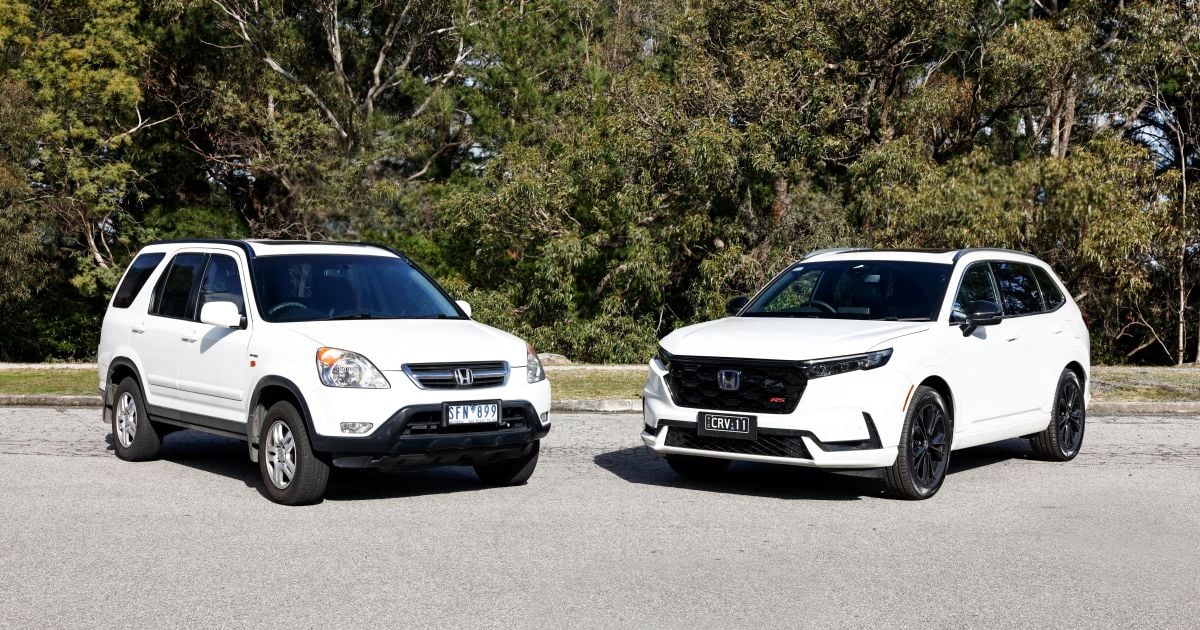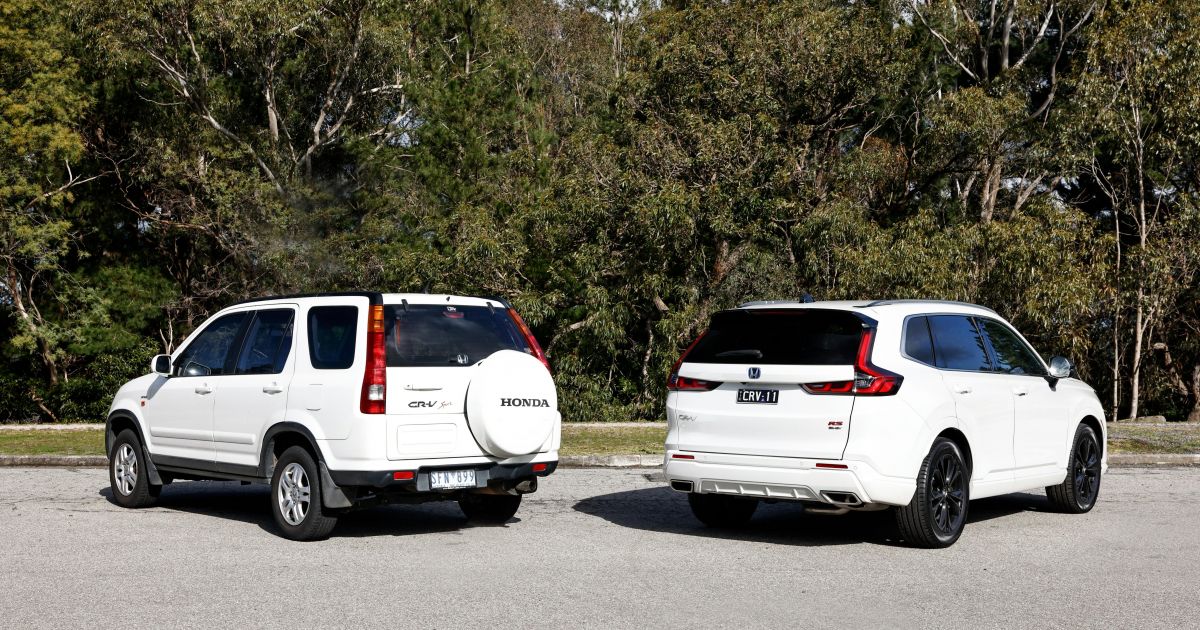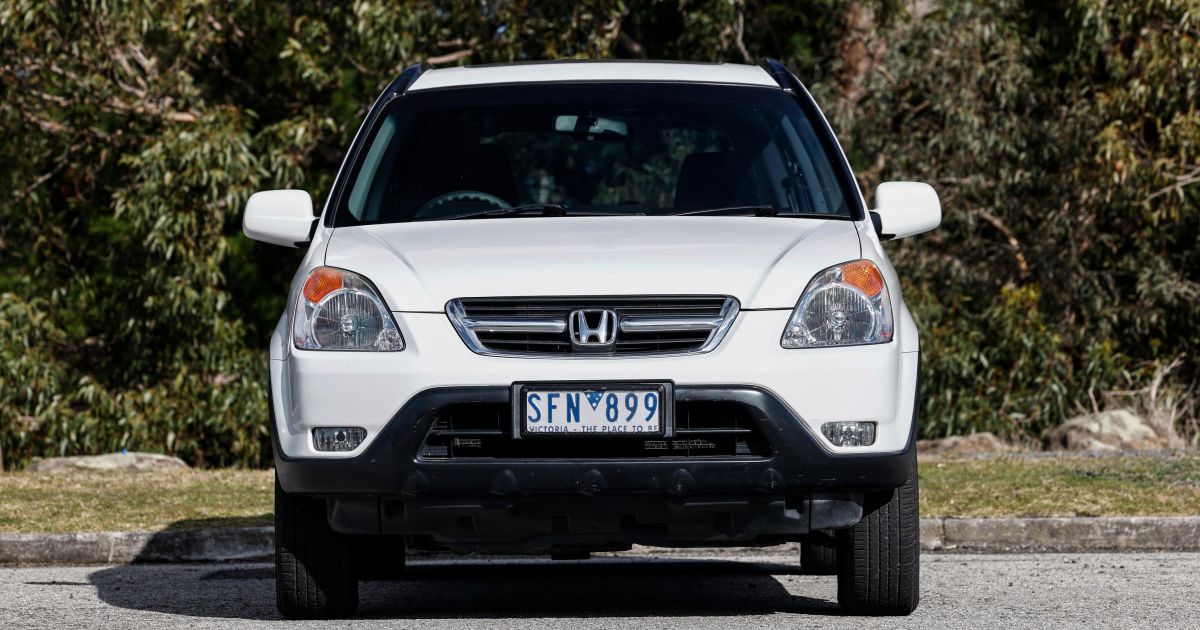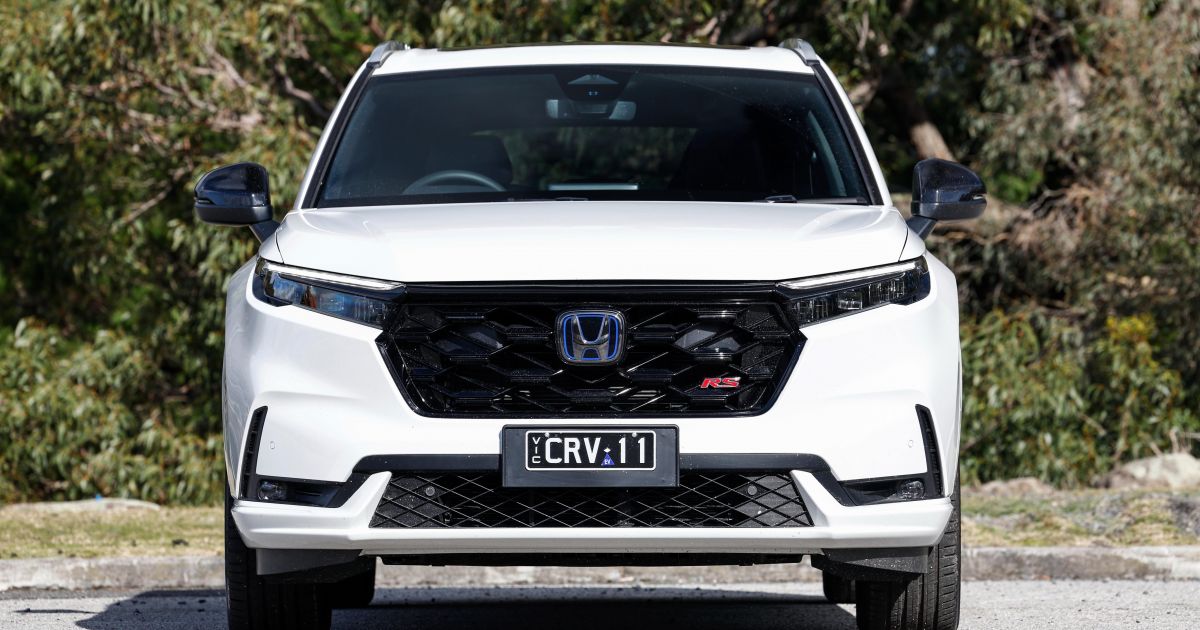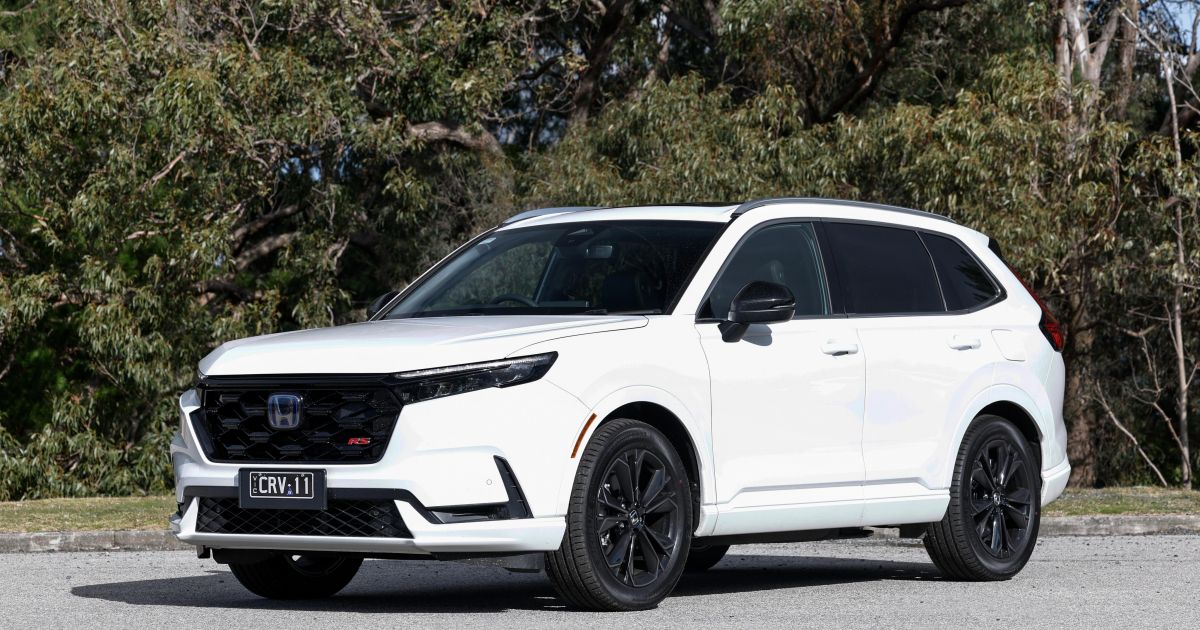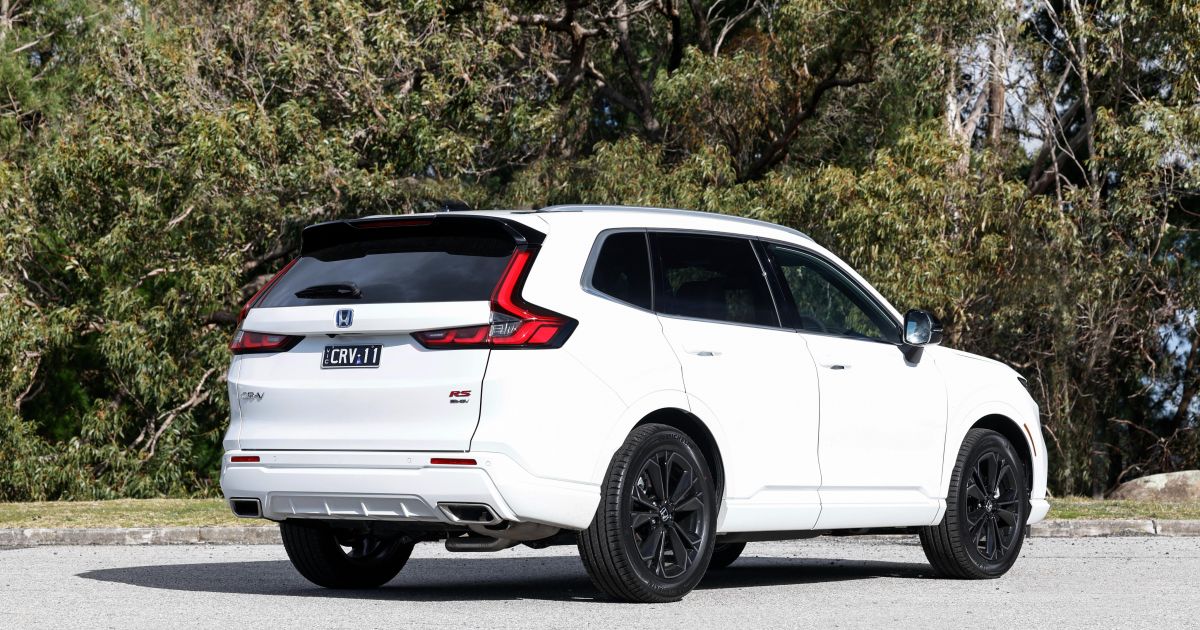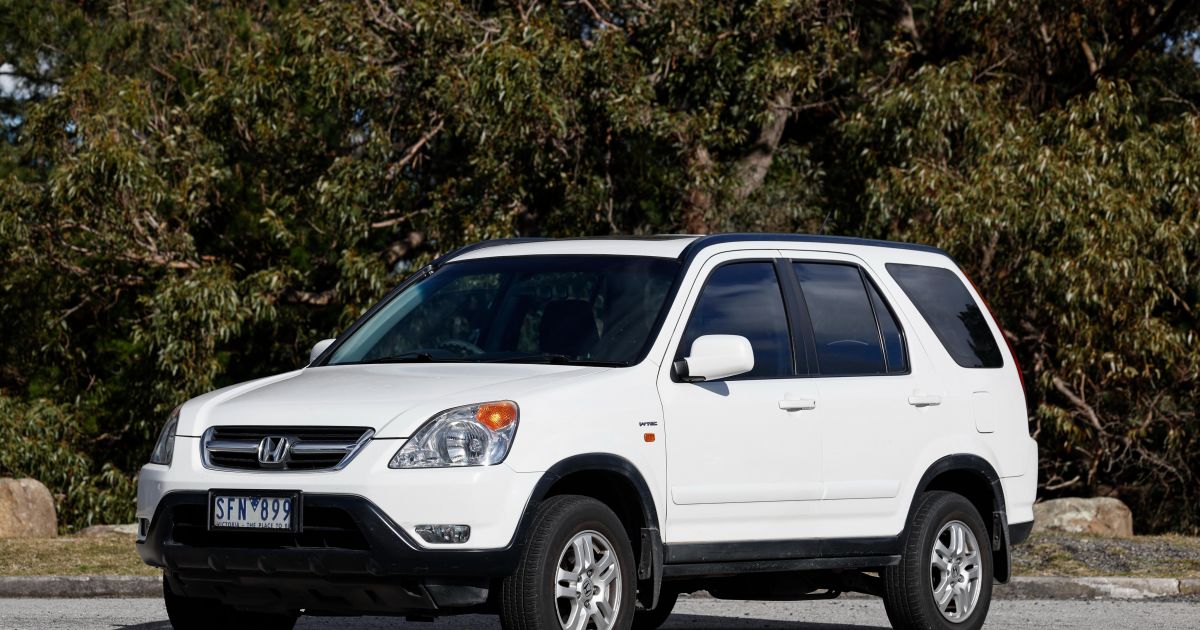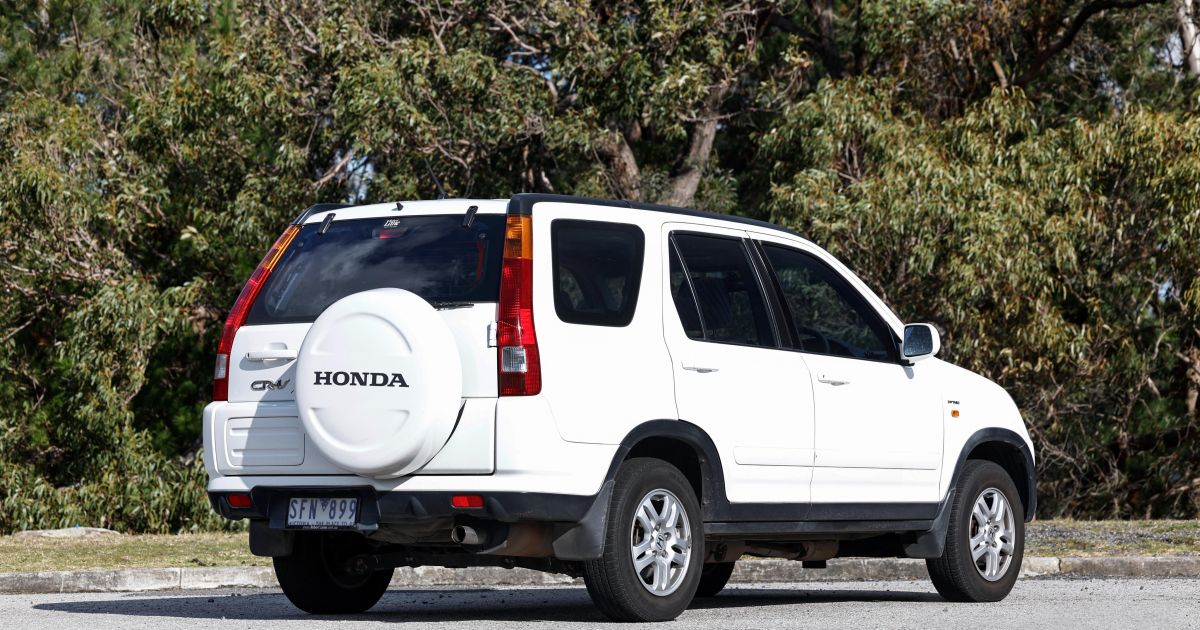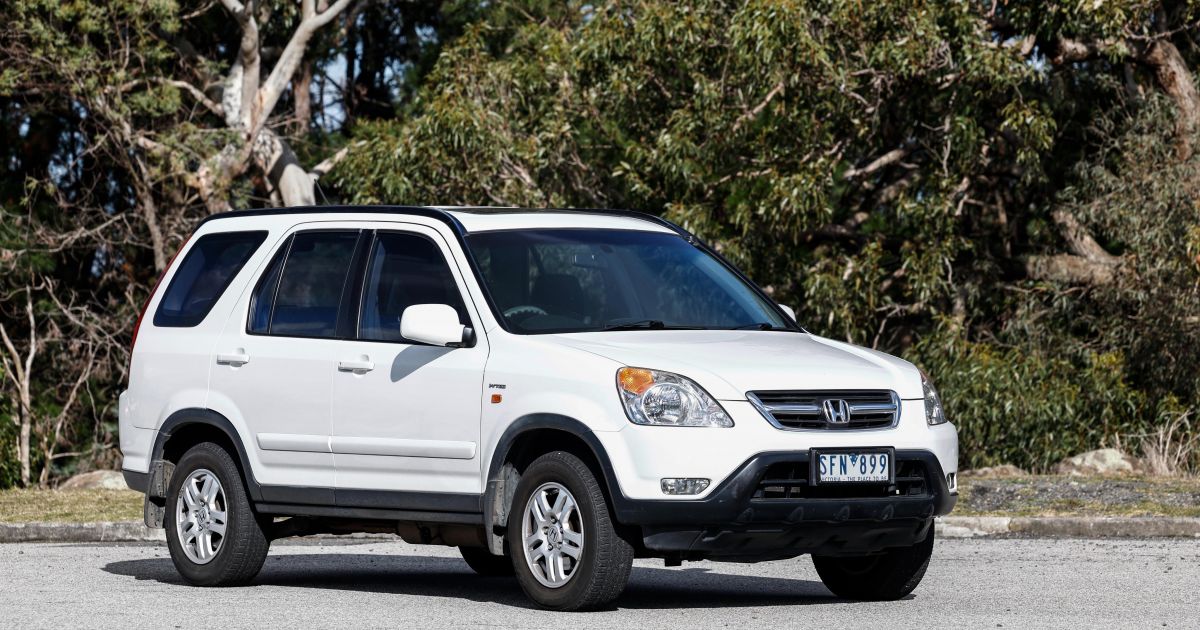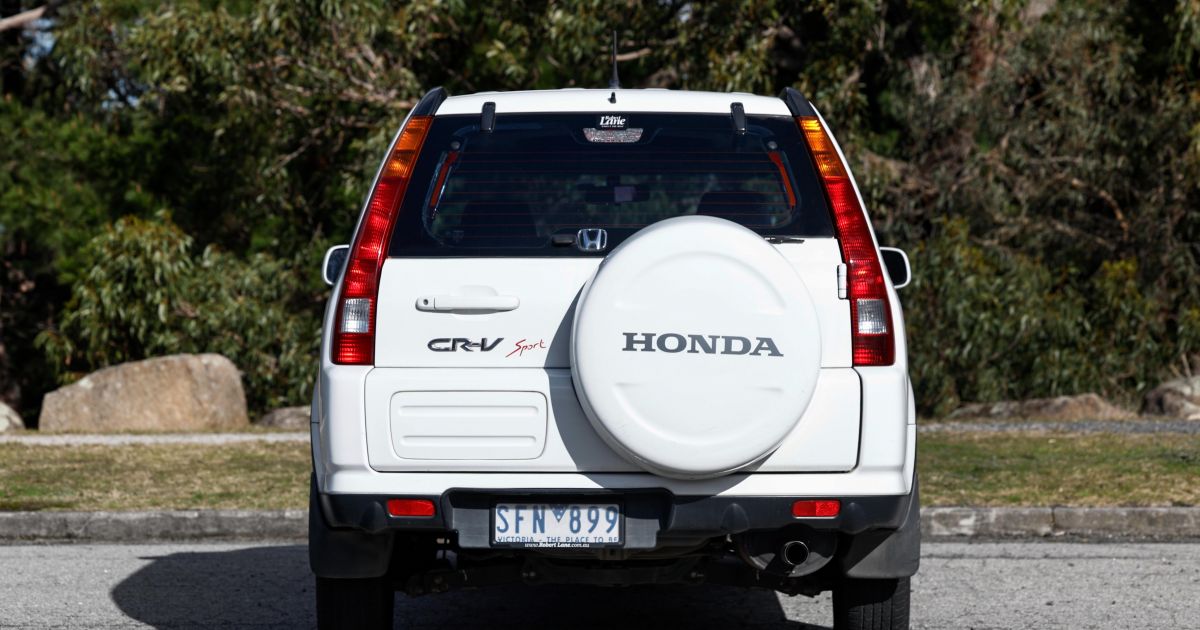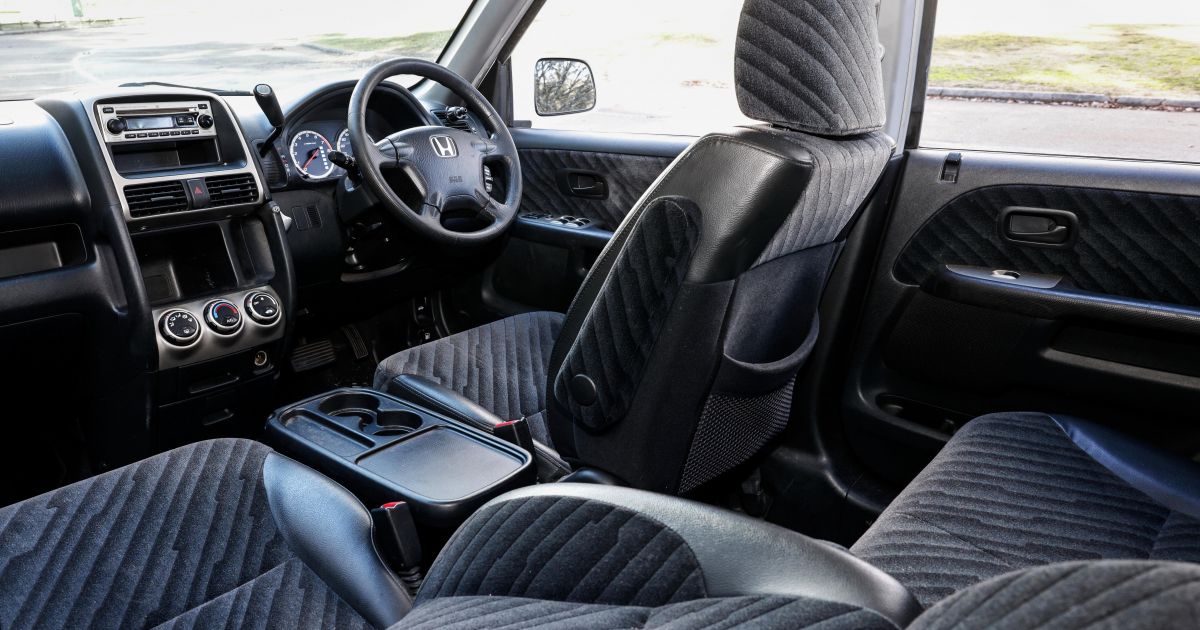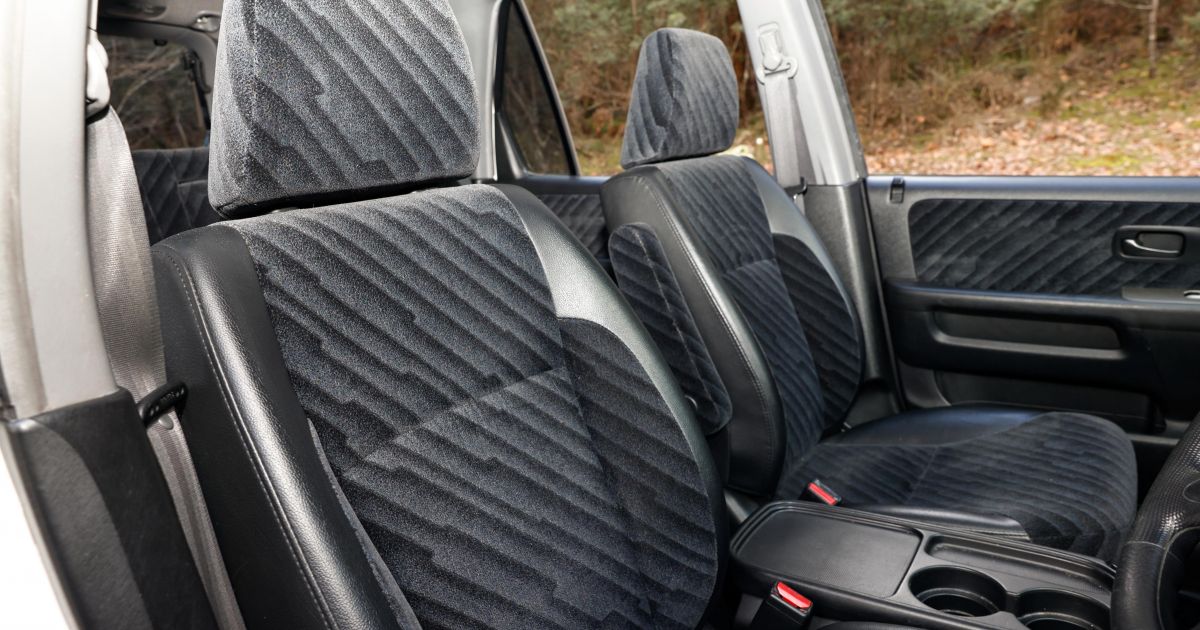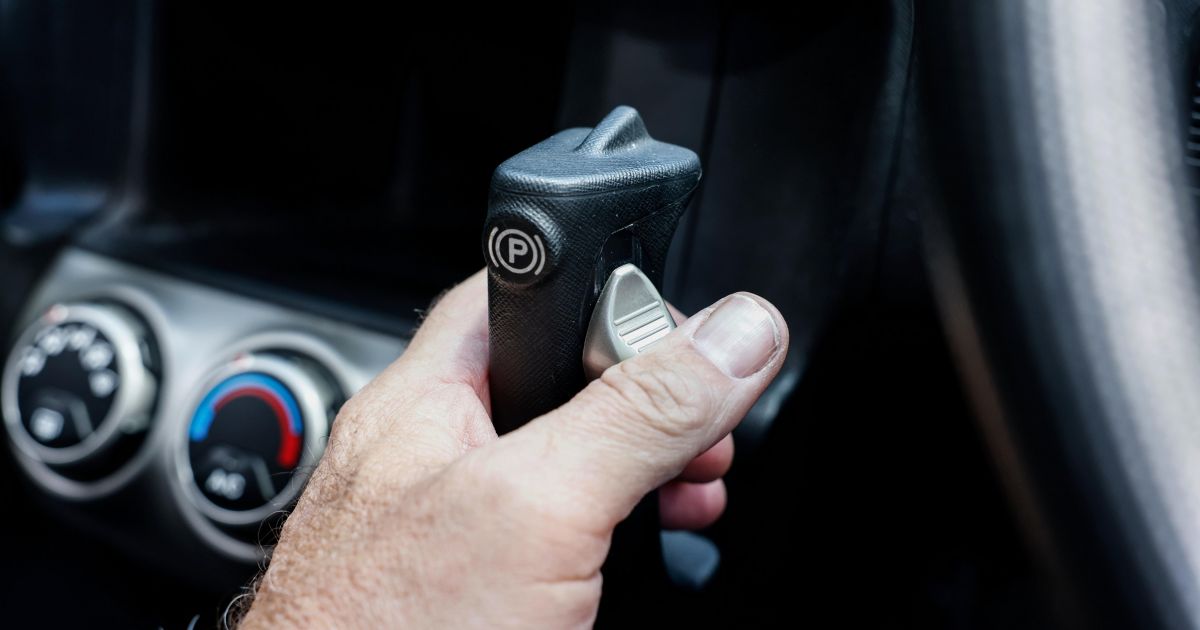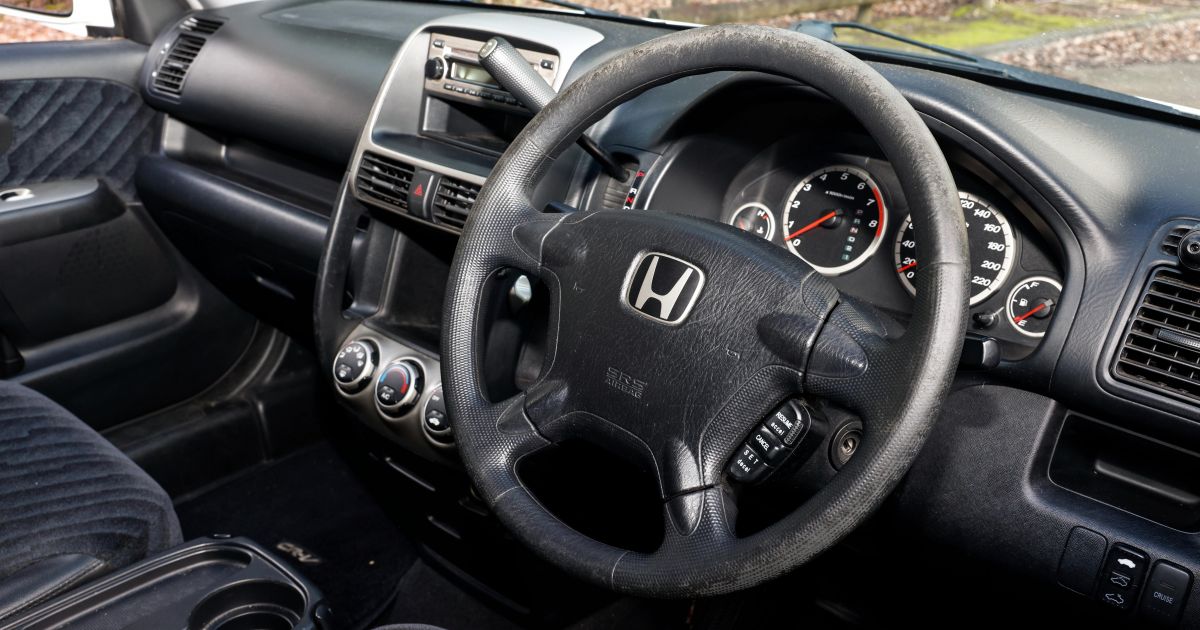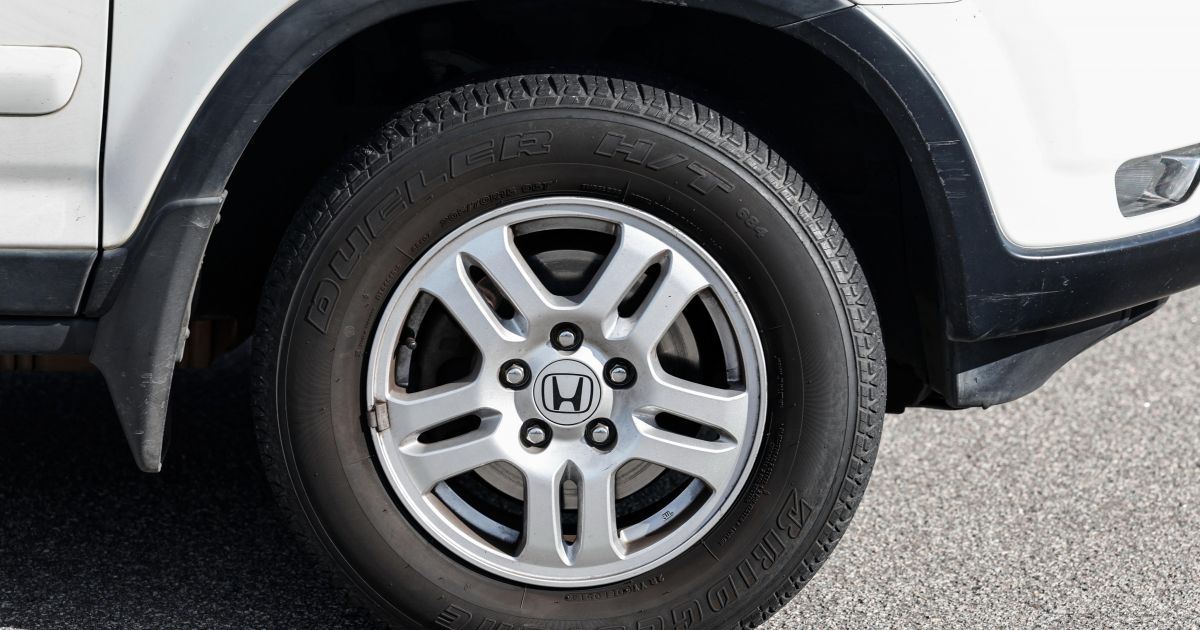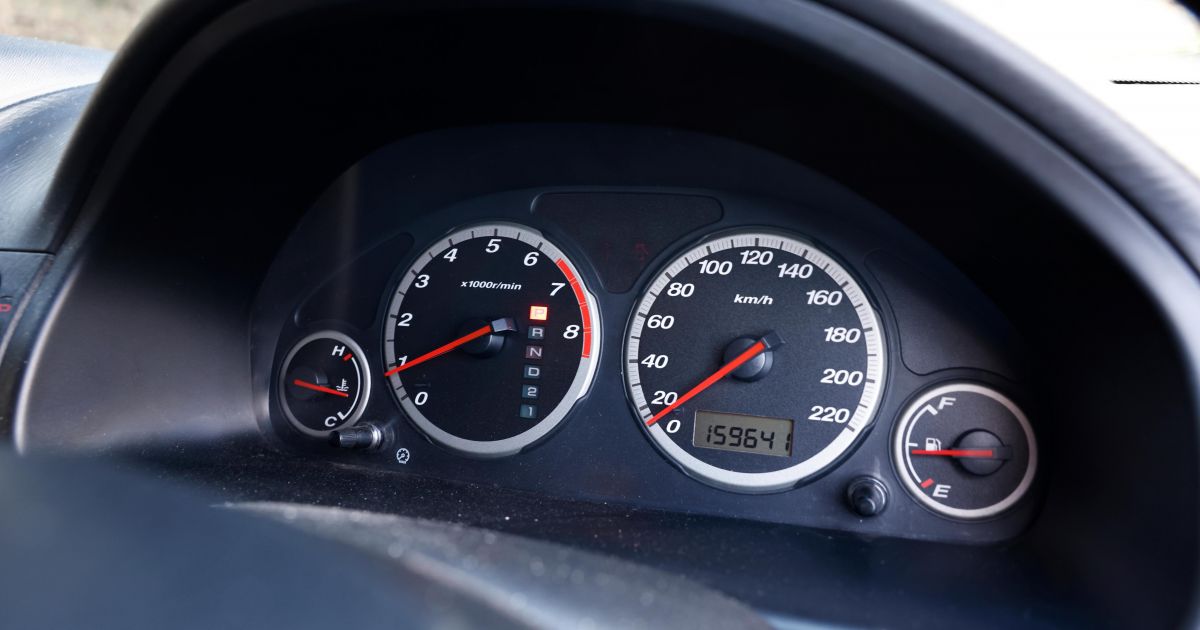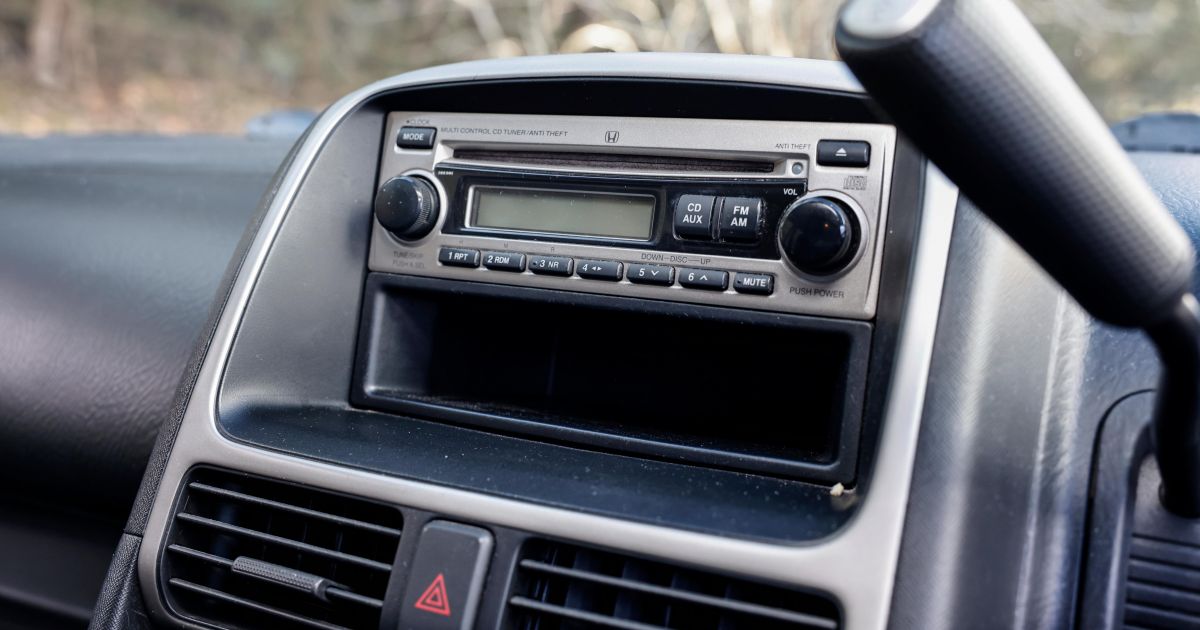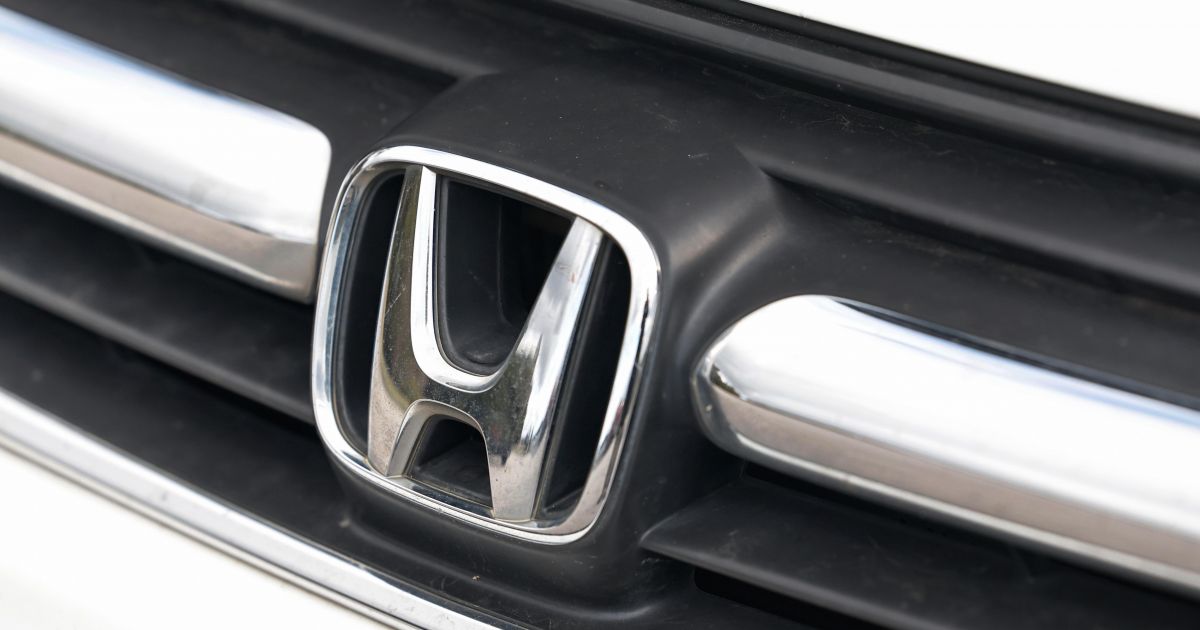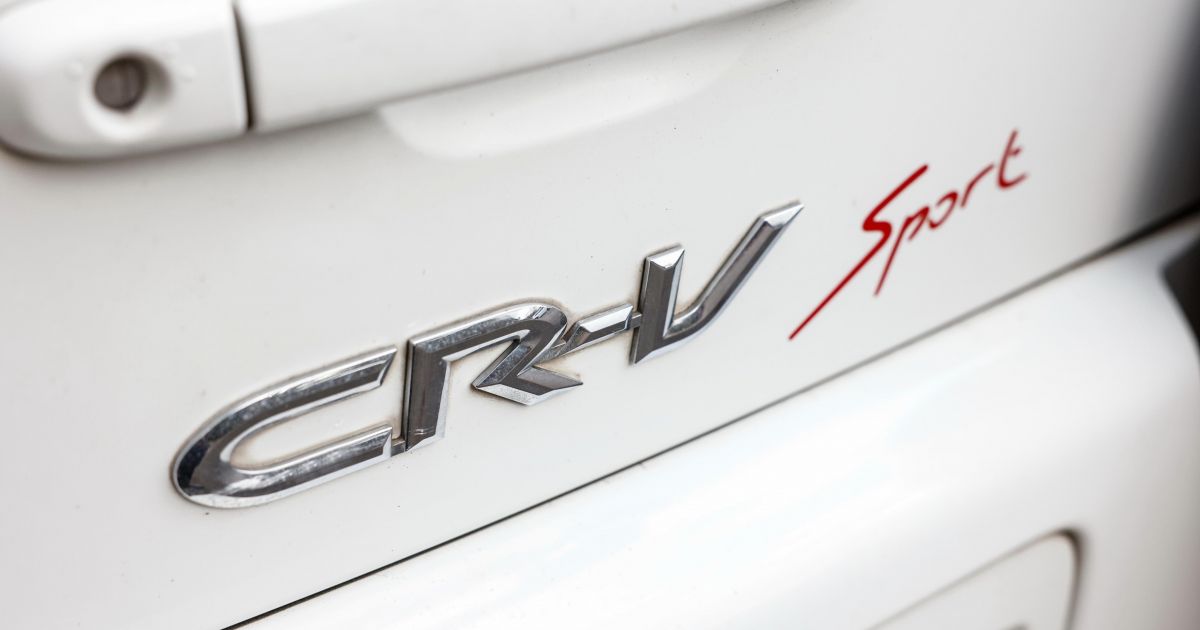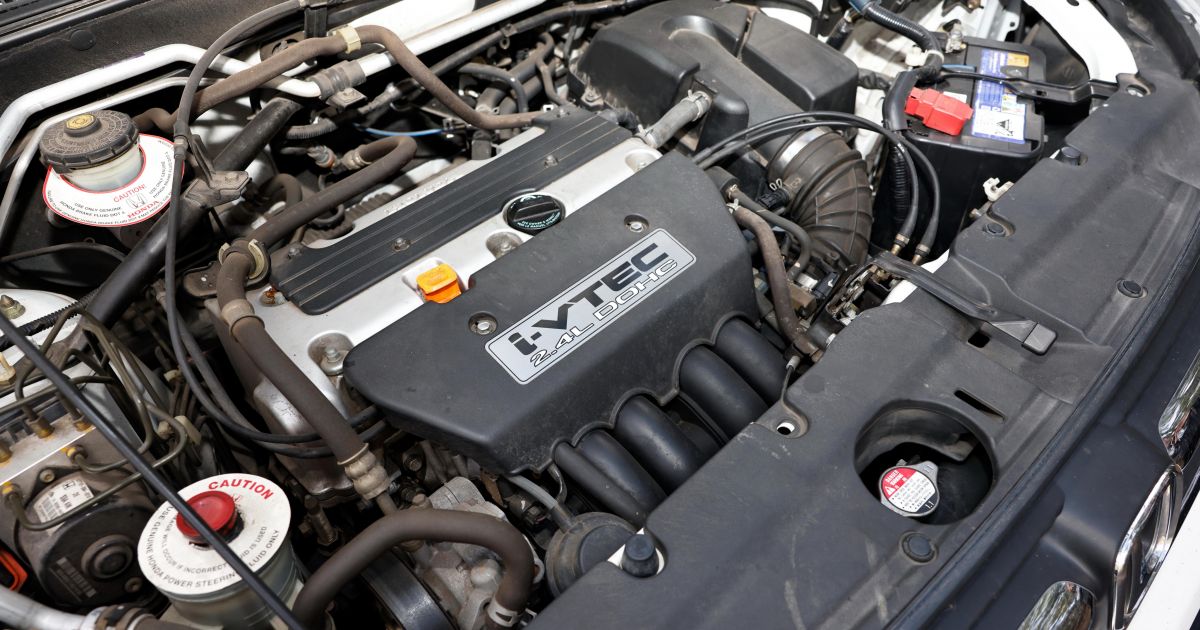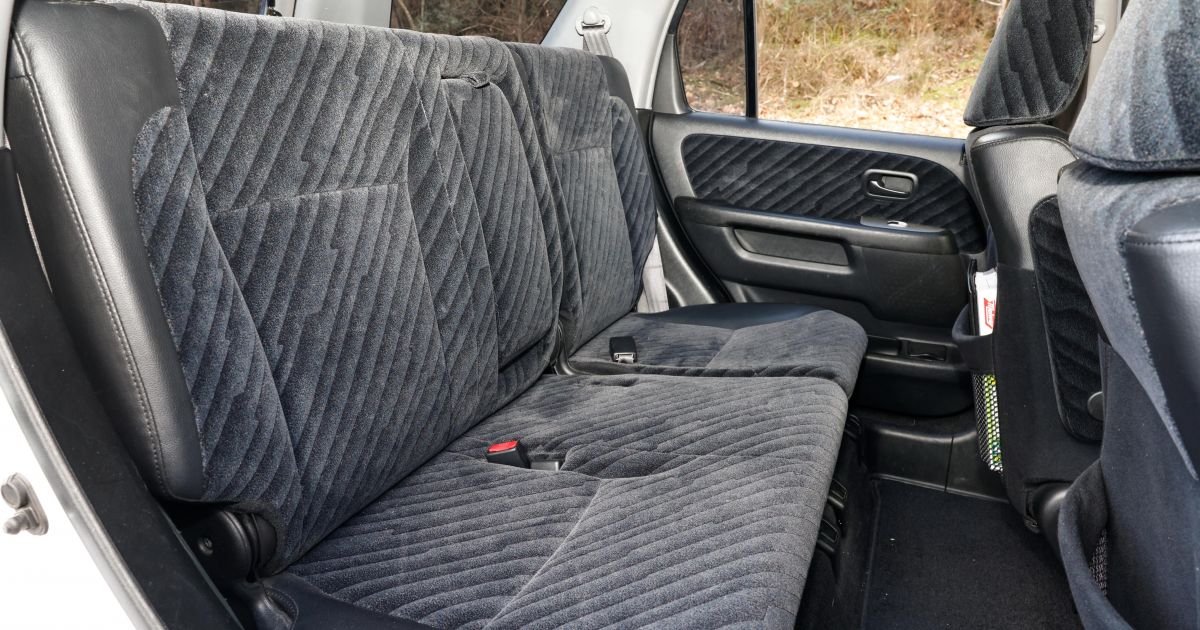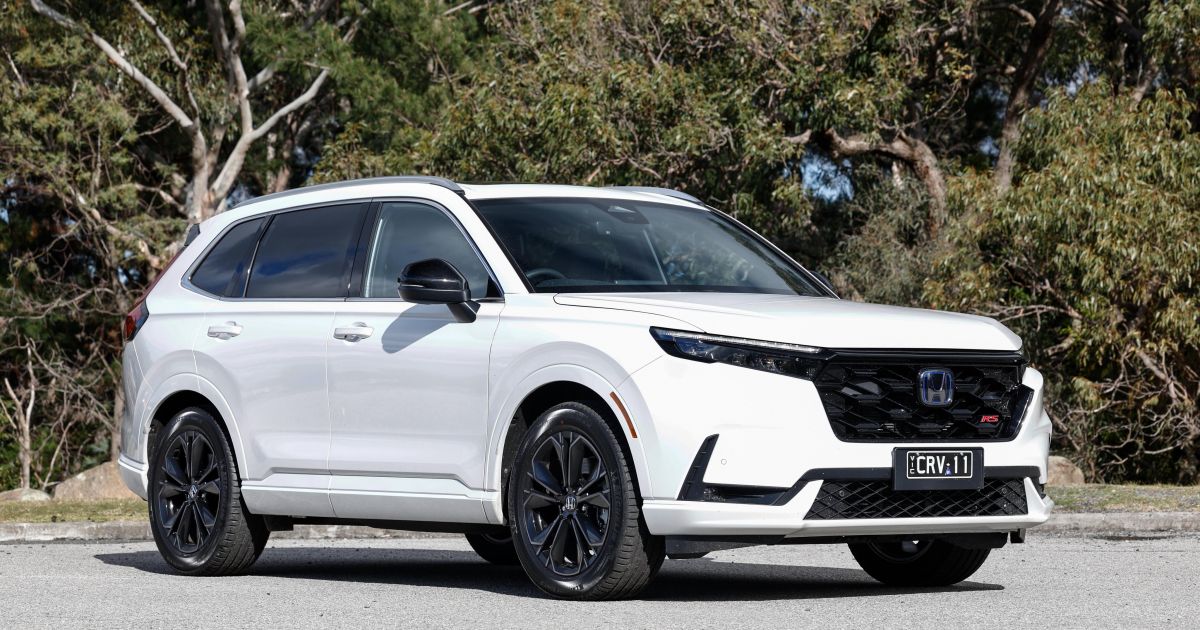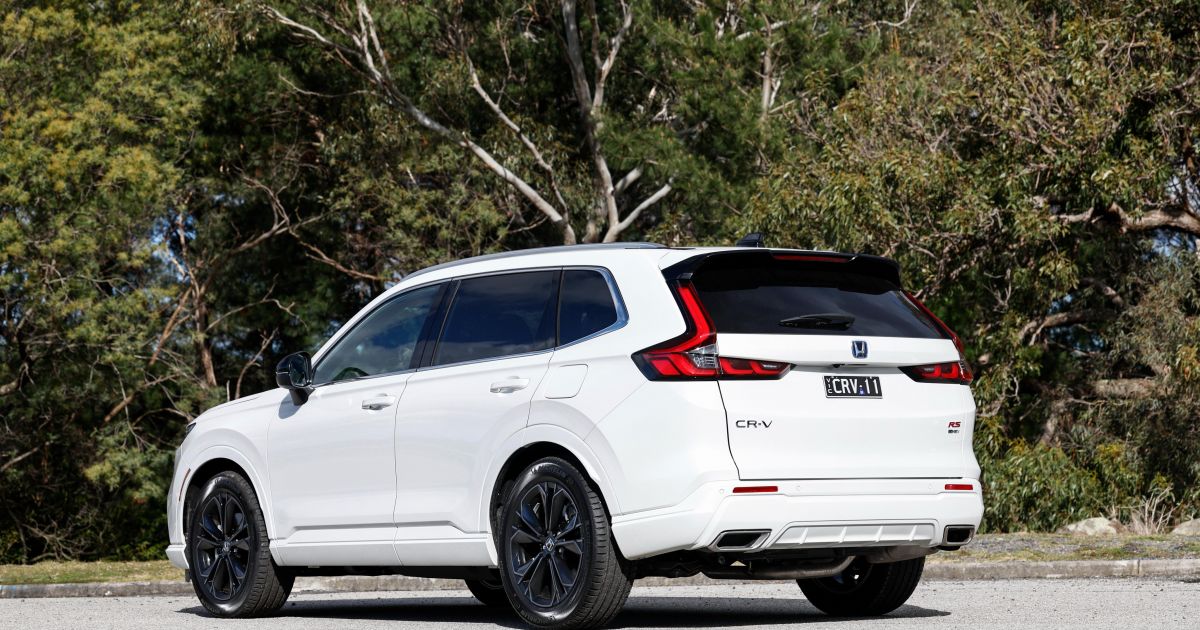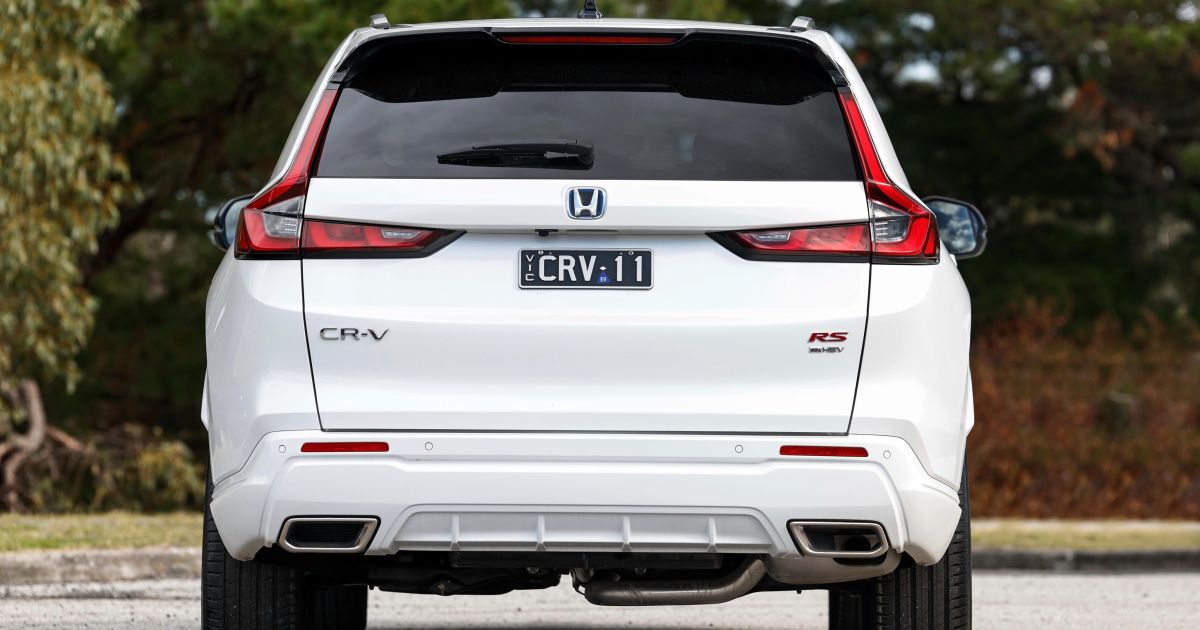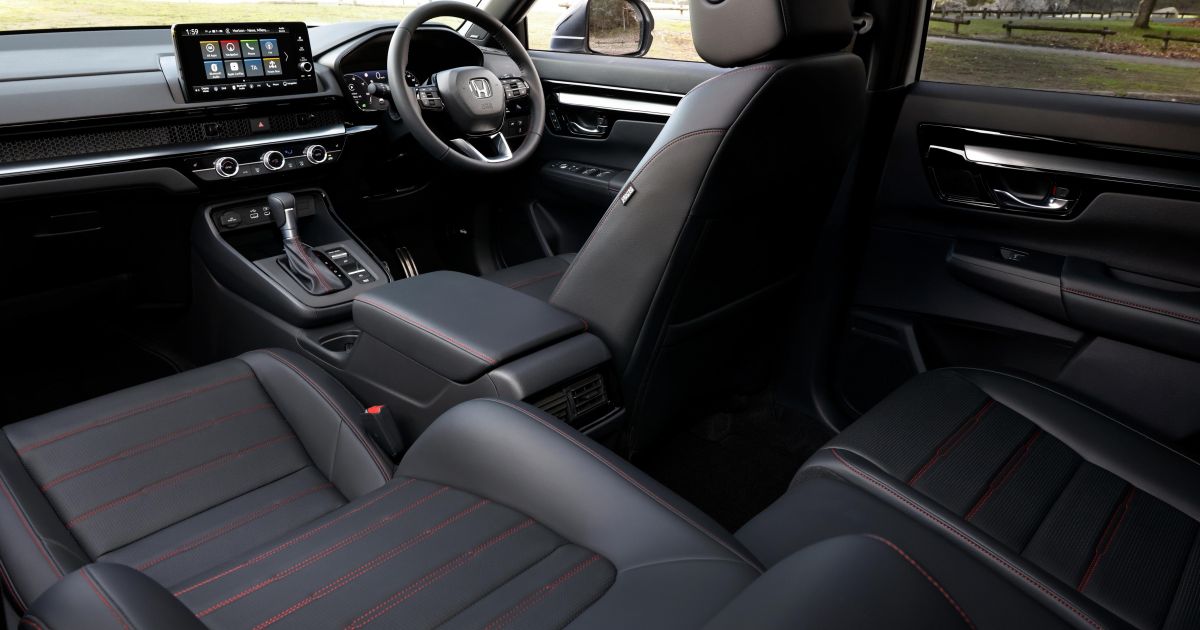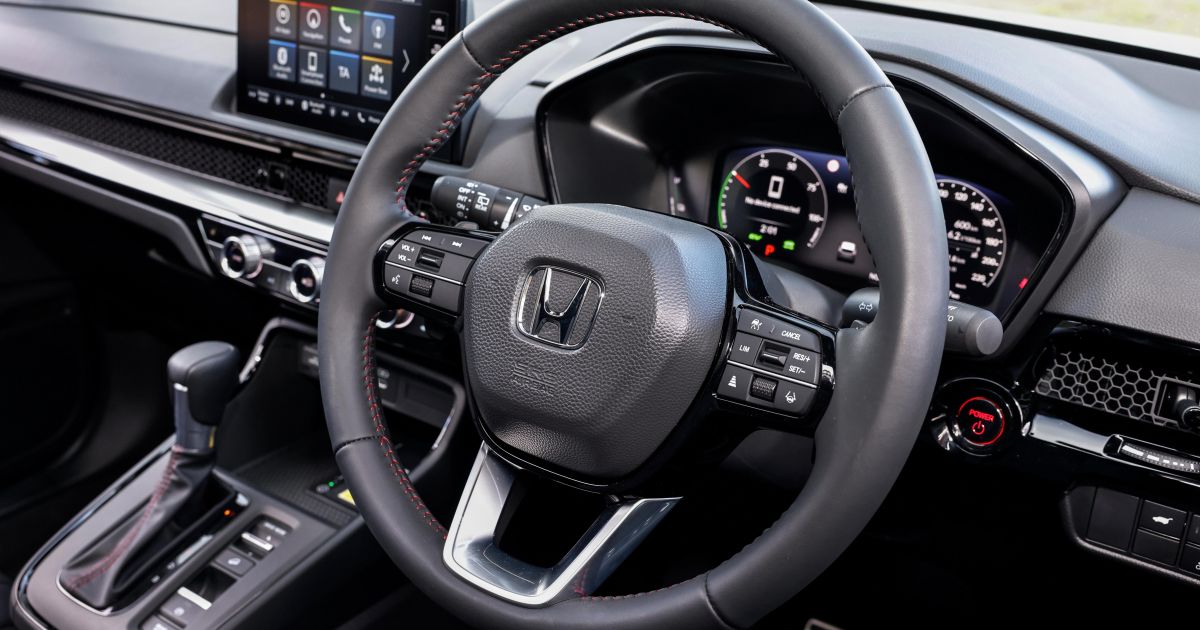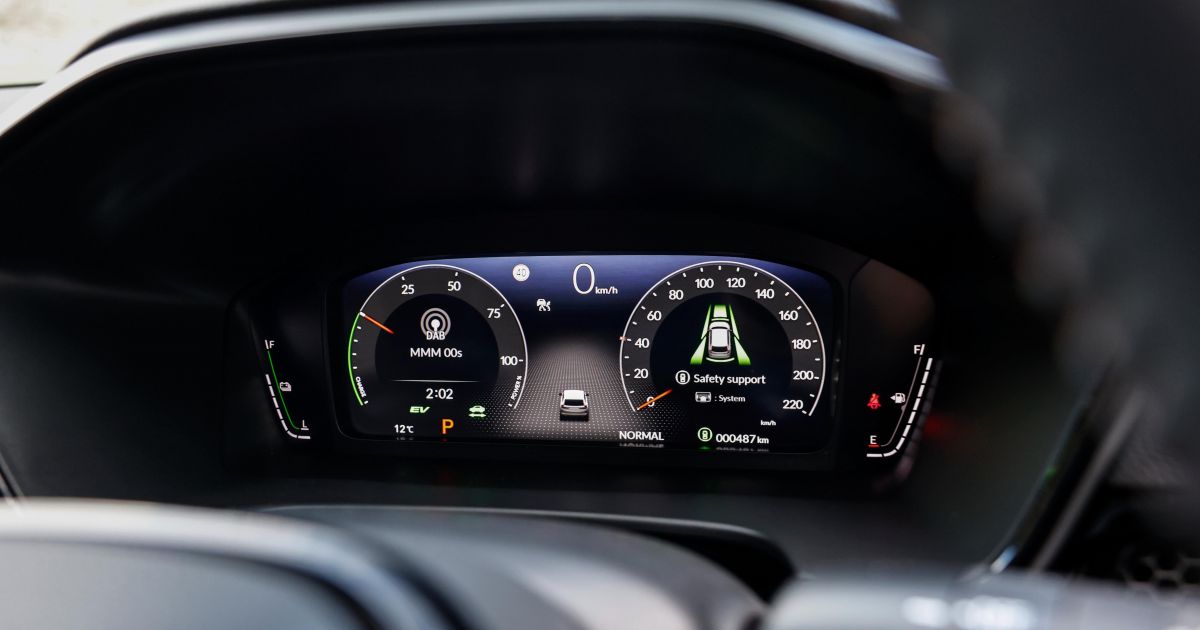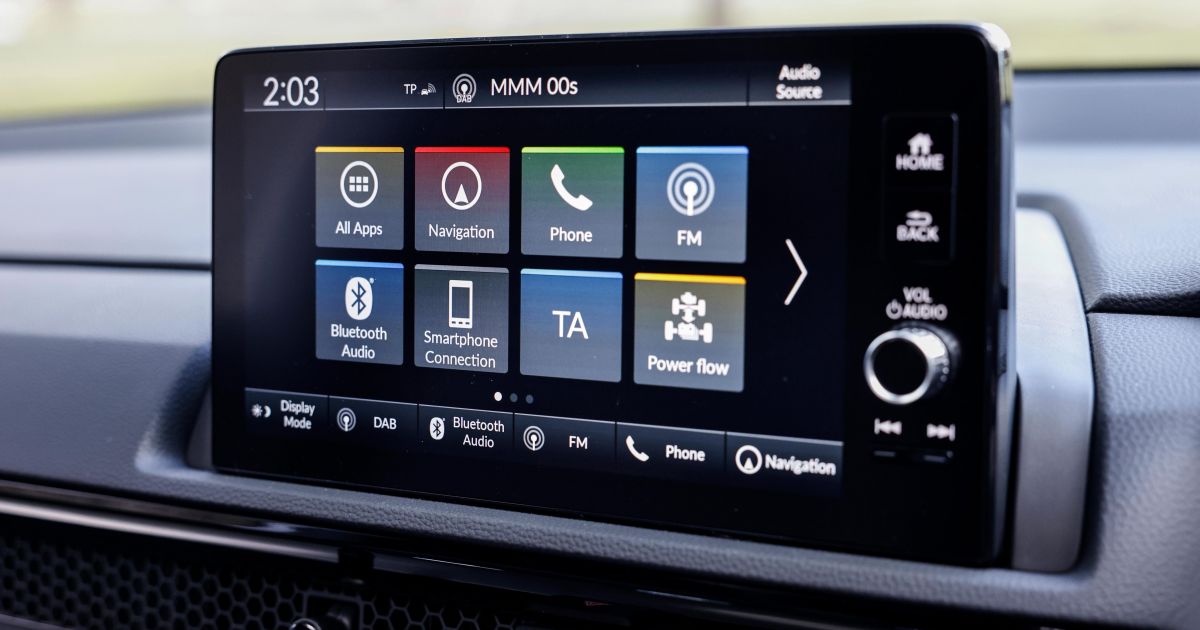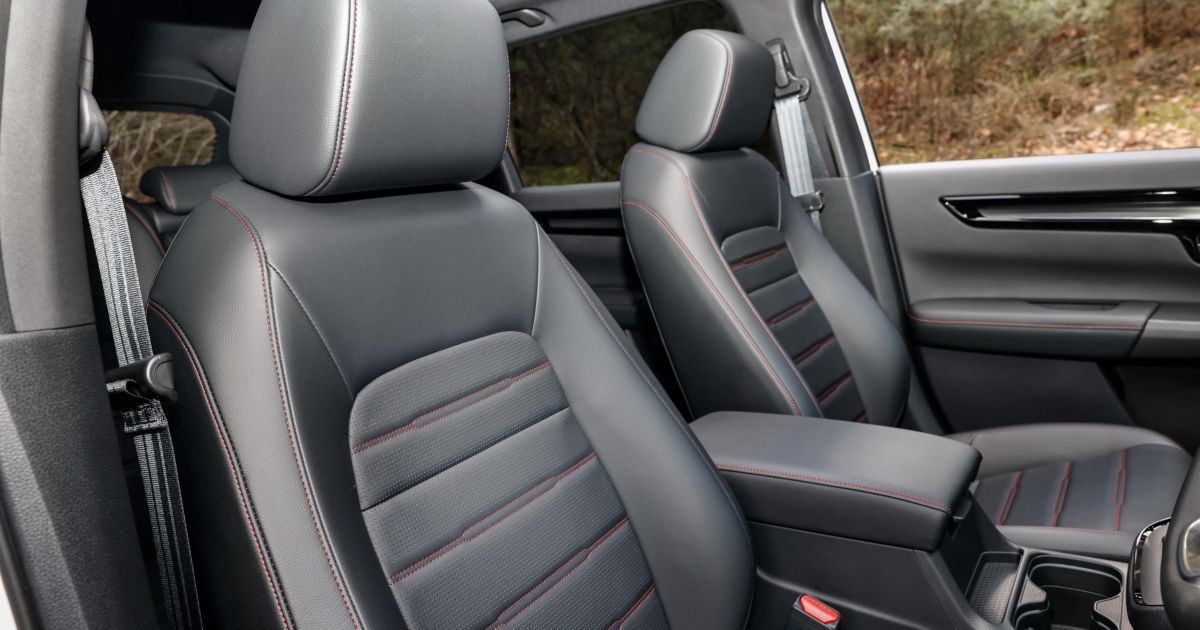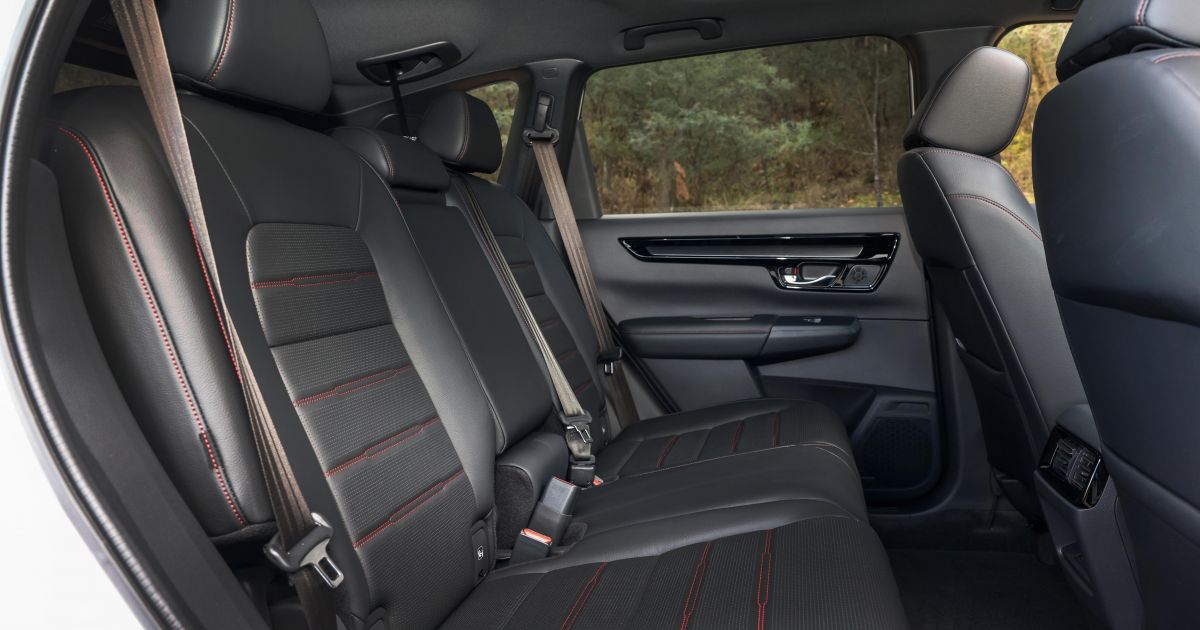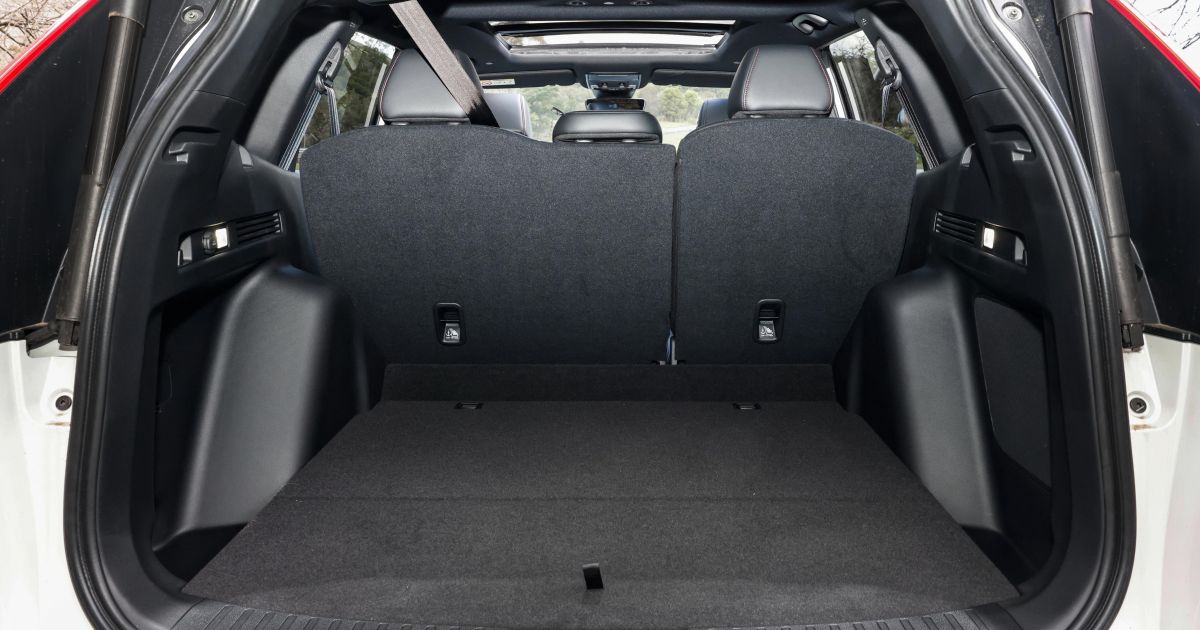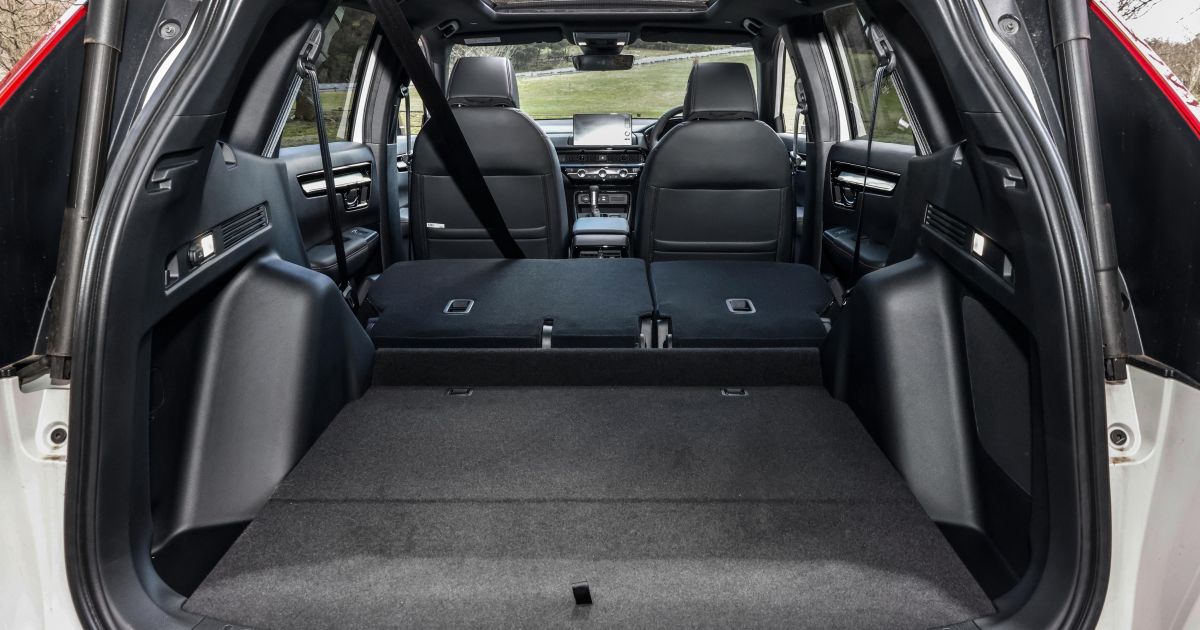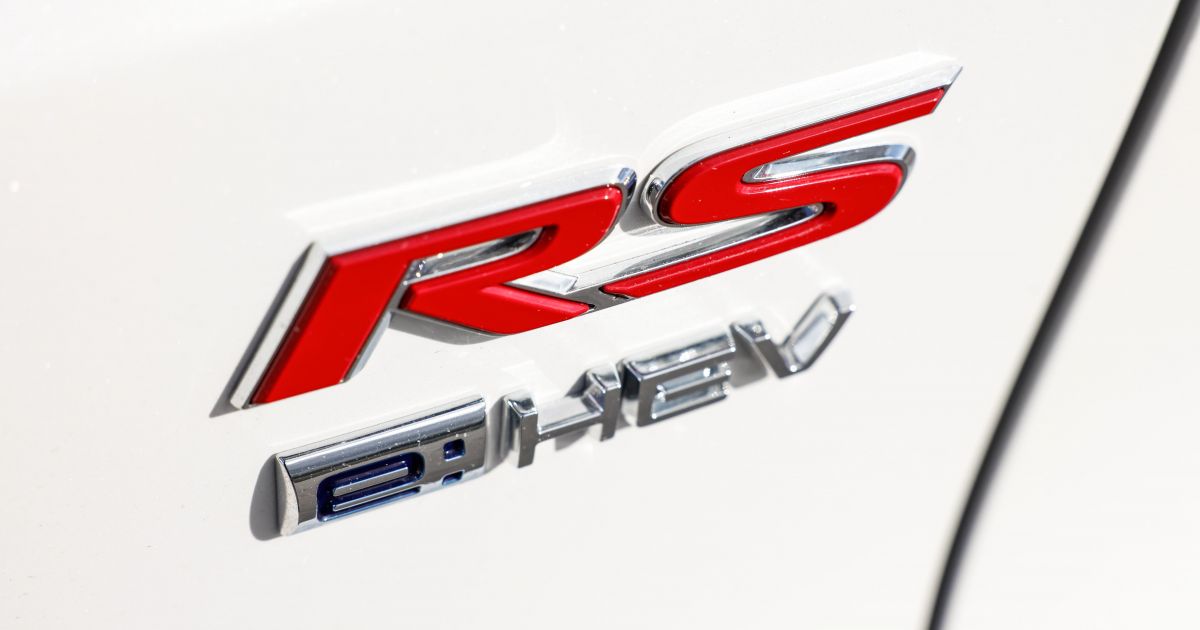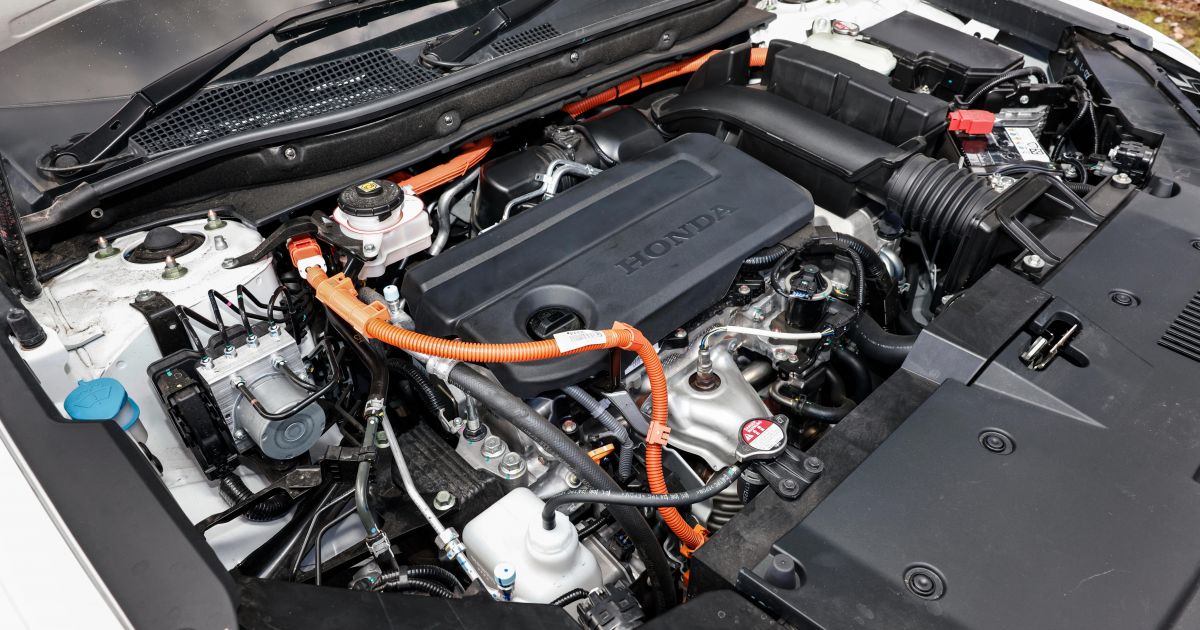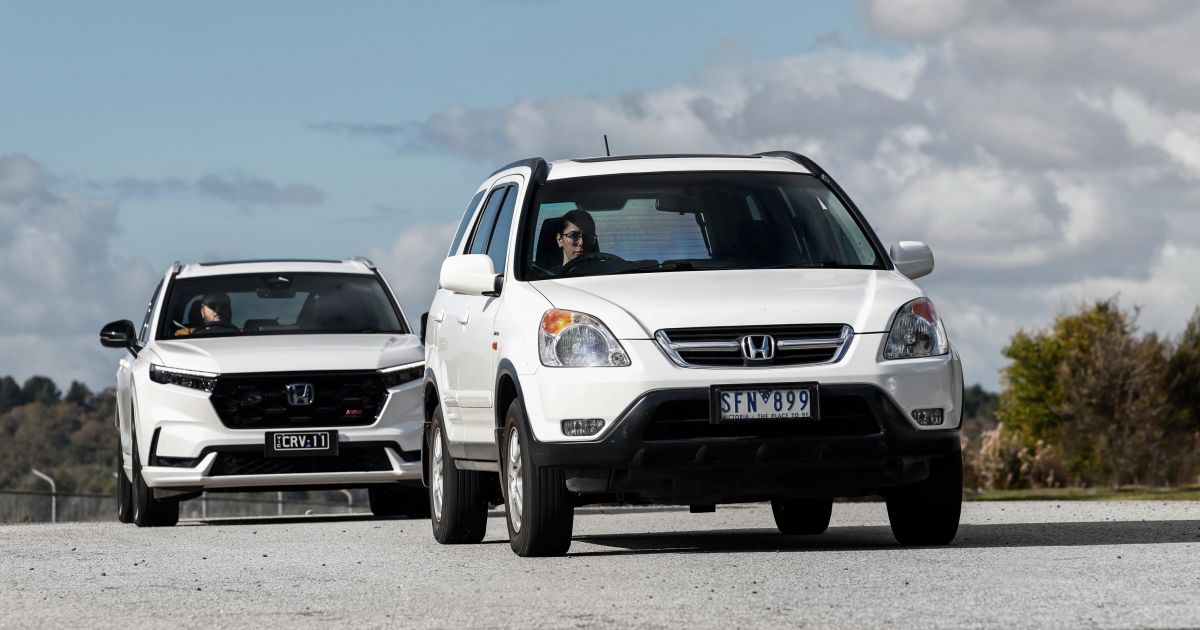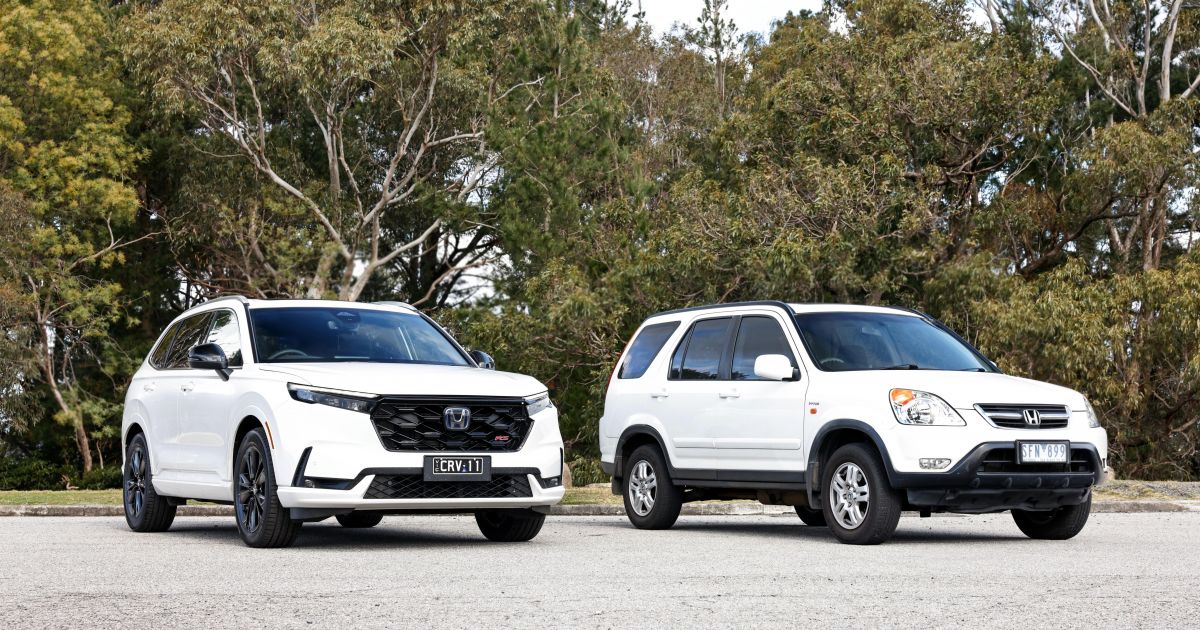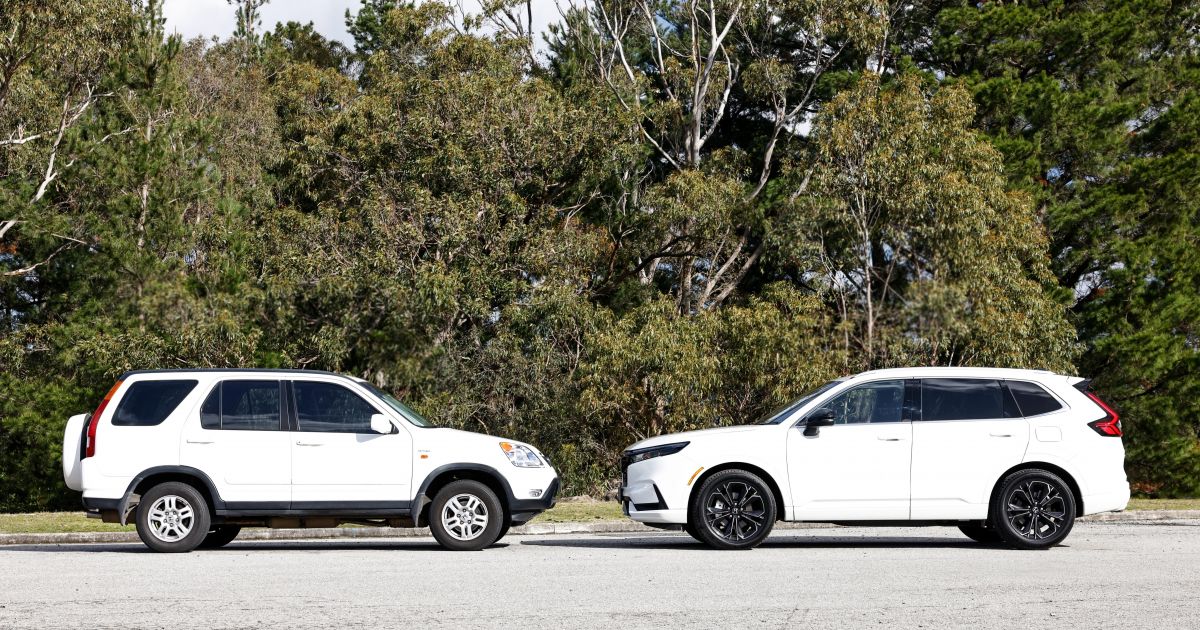SPONSORED
It was 1997 when the Honda CR-V was first launched in Australia and became one of the pioneers of the so-called ‘soft-roader’ segment.
The mid-size SUV was an instant hit with families, combining the spaciousness, flexibility and visibility of a wagon with the comfort and driveability of a mid-size car – a formula that propelled Honda to become one of Australia’s best-selling auto brands by the turn of the century.
CarExpert can save you thousands on a new car. Click here to get a great deal.
Up to that point, SUVs were almost entirely designed for off-roading, making them heavy and uncomfortable for commuting.
But the CR-V offered buyers something different and more than 40,000 examples found new homes across Australia in just four years, forcing Honda’s competitors to scramble to launch their own soft-roaders.
Fast-forward to today – almost three decades later – and the automotive industry is now flooded with small and mid-size SUVs, as we now call them, and the latter now form Australia’s most popular new-vehicle type.
But despite dozens of newcomer brands popping up, the Honda CR-V remains one of the few medium SUVs trusted by consumers, given its history of quality, reliability, and comfort.
Consequently, the CR-V remains as one of the few SUVs with a proven legacy, and has cemented itself as a benchmark for the rest of the industry.
CarExpert can save you thousands on a new Honda CR-V. Click here to get a great deal.
Not So Soft Roader
It was 1997: the blockbuster movie Titanic was released, an unknown home movie business called Netflix was founded, and Honda’s CR-V was released in Australia – marking the arrival of the first SUV for the Japanese brand in this market.
Related to the Honda Civic of the same era, the CR-V was only available in one trim, powered by a 2.0-litre non-turbo four-cylinder engine sending 94kW of power and 182Nm of torque to all four wheels.
The only decision for buyers was whether they wanted the five-speed manual or four-speed automatic transmission.
While the CR-V offered a commanding driving position and more space for families, arguably the coolest feature was the luggage shelf in the boot, which could be removed from the car and used as a picnic table, thanks to its foldable legs.
Today, these CR-V picnic tables alone sell for hundreds of dollars on eBay.
Those early CR-V models remain as charming as ever to drive today, offering a low shoulder line – translating to generous outward visibility, akin to the original Range Rover – together with a perky and responsive engine that has gained a reputation for being unkillable.
Perhaps that’s why there are still so many on the road today, while others have disappeared?
Thanks to owner David, we were given the opportunity to reacquaint ourselves with a second-generation model, which closely followed the recipe of the original CR-V.
Launched locally in early 2002, Honda gave the MkII CR-V a bit more space and a performance boost, with 118kW and 220Nm coming from its 2.4-litre four-cylinder – complete with the company’s iconic VTEC technology.
Buyers could now choose from a base CR-V or a Sport version, with the latter adding a sunroof, cruise control, front fog lights, anti-lock brakes, colour-matched bumpers and mirrors, and 15-inch alloy wheels.
More than 20 years later and both the cloth trim and the plastics remain in exceptional condition, coupled with thoughtful design features like the dash-mounted gear selector – freeing up space in the centre console – and an integrated parking brake lever built into the dash.
On the road, the old girl remains solid, while still offering a driving experience many of today’s ‘Sport’ Utility Vehicles can only dream of. The ride is compliant without being too soft or firm, the engine is strong and responsive, and the steering is direct.
By 2002, the CR-V was the best-selling SUV in Australia, with more than 12,000 sold in that year alone. It’s easy to see why, given how easy the CR-V is to drive – even by today’s standards.
CarExpert can save you thousands on a new Honda CR-V. Click here to get a great deal.
A New Generation
It’s now 2025, and Honda is producing its sixth-generation CR-V – and while much has changed in those two decades, some things remain the same.
The 2025 Honda CR-V e:HEV RS – the sporty range-topping variant, complete with a hybrid powertrain – continues to be a leader in the medium SUV segment.
It’s also still just as easy to drive and live with as its forebears, but the comfort and technology has clearly come a long way.
While the rest of the CR-V range is powered by a 1.5-litre four-cylinder turbo-petrol engine, the RS combines a 2.0-litre non-turbo four-cylinder with two electric motors in a hybrid system – offering both performance and exceptional fuel economy.
Despite boasting 135kW and 335Nm, the CR-V e:HEV RS has impressive average fuel consumption of just 5.5L/100 kilometres.
In other words, even though it has over 84 per cent more torque than the first CR-V, it uses almost 30 per cent less fuel.
Interestingly, in 1997 the first CR-V was priced from $29,950 – the equivalent of more than $62,000 in today’s money – while the entry-level 2025 Honda CR-V VTi X+ is available from only $41,900 drive-away.
And the CR-V e:HEV RS we’re testing today costs just $59,900 drive-away… with all the fruit.
Though it’s comparatively cheaper now, on the road the CR-V continues to be perky, responsive and easy to drive – but the experience has stepped-up significantly since those early days, with a cabin that’s now comparable with cars from European brands. But with the added benefit of reliability, thanks to Honda’s engineers in Japan.
Comfort and quality remain hallmarks of the CR-V, yet the company has improved the model to the point where it’s now firmly a premium offering, combining smart design with a long list of standard features.
These include leather trim, heated seats, dual-zone climate control, a panoramic sunroof, crisp reversing camera, wireless phone charger, Bose sound system with subwoofer, wireless Apple CarPlay and Android Auto, digital gauges, LED headlights, 19-inch alloy wheels, and a long list of active and passive safety systems.
CarExpert can save you thousands on a new Honda CR-V. Click here to get a great deal.
CarExpert’s Take on the Honda CR-V
While the Honda CR-V was somewhat of a quiet trend-setter in the mid-size SUV segment back in the 1990s, it’s still considered the standard in this space after so many years.
It continues to innovate in both small and big ways, while consistently delivering the things that Aussies want in a family car.
The CR-V is a vehicle that offers generous cabin space yet isn’t too big to park, plenty of interior comfort without being too flashy, and crisp engine performance without sacrificing efficiency or refinement.
It also brings cutting-edge safety features that don’t annoy the driver, and a driving experience that’s both effortless and fun at the same time.
As the market becomes inundated by unknown and unproven SUVs from China – with many industry commentators speculating on which brands will last and which ones will cut and run – the Honda CR-V is close to marking an impressive three decades on Australian roads.
With a discernable lineage between early CR-V models and the latest version from Honda, it’s clear its legacy runs deeper than just the badge.
MORE: Everything Honda

